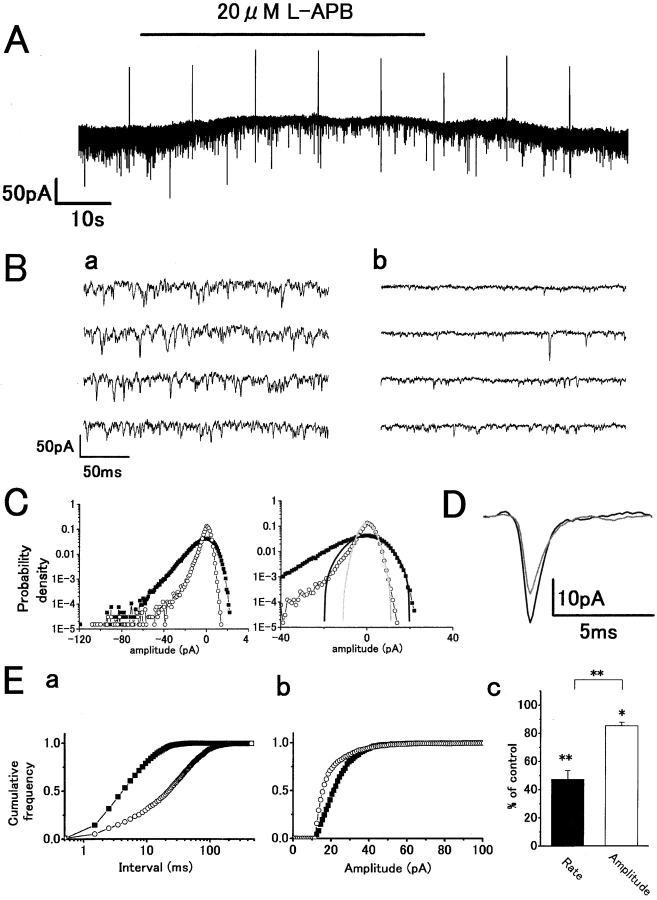Figure 4.
L-APB reduces sEPSC rate in darkness with slight reduction of mean peak amplitude similarly analyzed as in Fig. 2. Symbols: control (closed squares or black traces) and L-APB (open circles or gray traces). (A) Whole-cell voltage-clamp recording from an H1 HC showing an outward current response to application of 20 μM L-APB with a reduction in sEPSC rate. The patch-pipette solution contained 100 μM H-7 to block the post-synaptic action of L-APB, mediated by phosphorylation. V h = −57 mV. (B) Fast sweep recordings before (a) and during (b) L-APB application. (C) Gaussian functions (σ = 7.5 pA) and with L-APB (σ = 3.1 pA). (D) Time course of averaged sEPSCs before (n = 84) and during L-APB application (n = 104). (E, a) Cumulative interval histograms in control (n = 2,935) and with L-APB (n = 1,112) indicate reduction of sEPSC rate with L-APB. Mean sEPSC intervals: 6.8 ms (control) and 34.0 ms (L-APB). (b) Cumulative peak amplitude histograms in control (n = 1,249) and with L-APB (n = 885). Mean amplitude in L-APB (20.2 pA) reduced compared with that in control (28.2 pA). (c) Summarized bar chart (19 cells). L-APB reduced the sEPSC rate by 52.7 ± 6.0% (P < 0.001) and slightly reduced the mean amplitude by 15.5 ± 2.1% (P < 0.001). The rate reduction was significantly greater than that of peak amplitude (P < 0.001).

